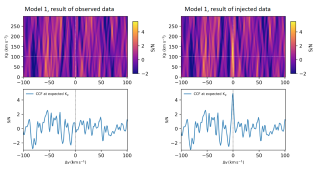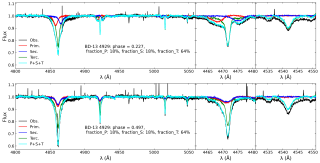The figure shows a) efficient absorption sections for the buckyonians formed by fullerenes of the 60n2 family that are completely full. In b) the absorption curves obtained in the combination of fullerenes and buckyonians, compared to observations of the
Advertised on
A possible explanation has been discovered for the UV peak at 2175A based on the presence of fullerenes and buckyonians in interstellar matter. This is a problem that has been known about in astrophysics for over fifty years.



